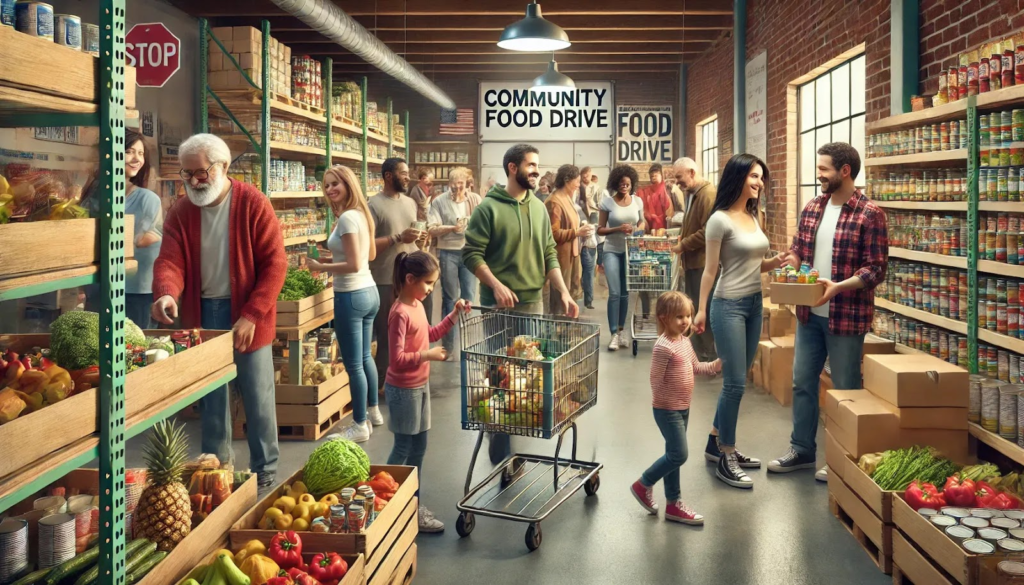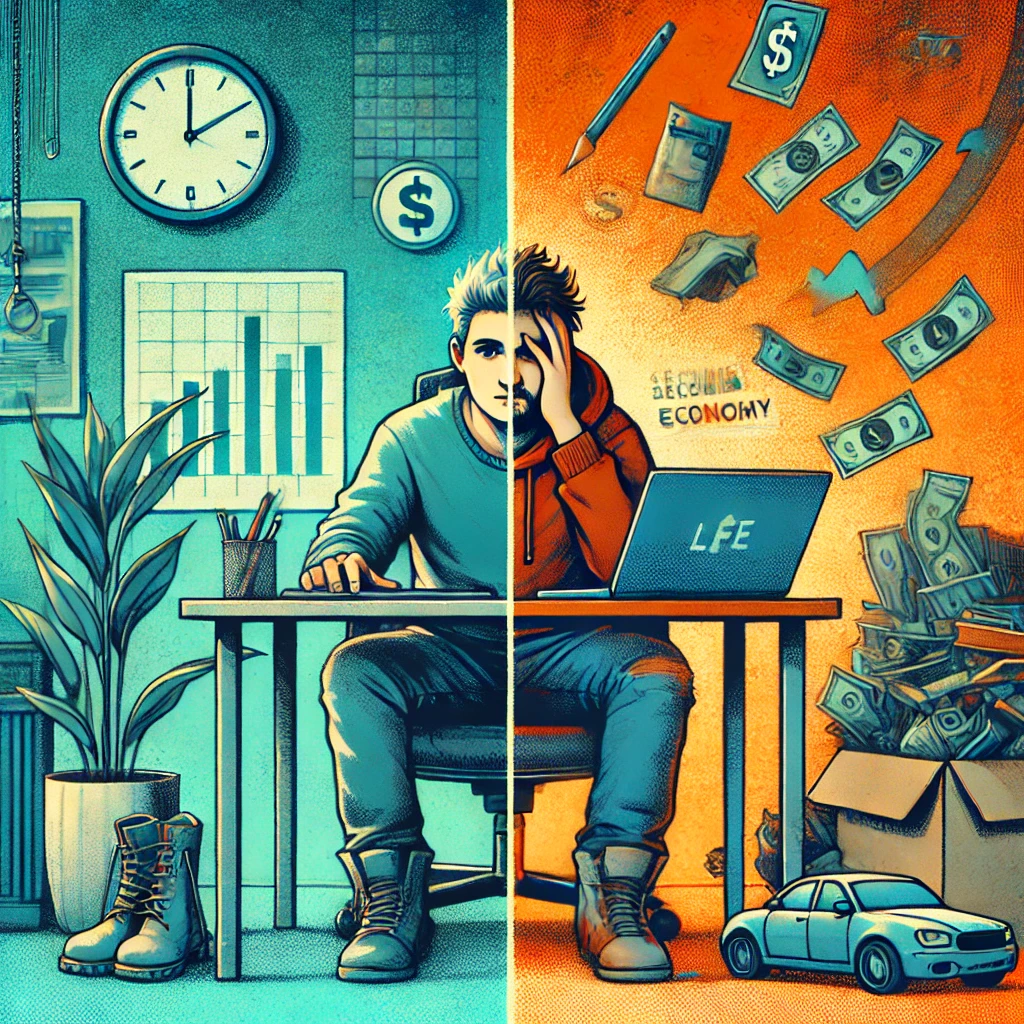8. Unsafe Working Conditions

Driving, in general, can be dangerous for any length of time. I once met someone who hit a deer and was in bad shape. I also met someone who had a truck accident and went through a difficult time as a commercial driver. I had two close calls with some deer that could have ended badly, but they ran slowly enough to avoid running into them. I once saw a man running across the interstate, and if I was going faster, I could have run into him as he crossed the interstate.
One unexpected expense I discovered was windshield damage, which has a much higher chance of happening when you drive more. A flat tire just a few times can be a devastating setback, occurring a few times when driving.
Of course, I’m not the only driver who has experienced these scenarios. Safety concerns are prevalent among gig workers. About 35% report feeling unsafe while working, and 19% have experienced unwanted sexual advances on the job. These issues raise significant concerns about the safety and well-being of gig workers (Tawiah et al., 2024).
The Journal of Urban Health is a leading and respected publication that offers thorough analyses to improve urban populations’ health and well-being. It is a forum for interdisciplinary research on the broad factors influencing health and health disparities, providing the necessary evidence to enhance policies, programs, and governance for urban health.
Some critical statistics were highlighted in a survey by the Journal Of Urban Health. About 21.9% and 20.8% of respondents (1 in 5) reported being injured and assaulted (Tawiah et al., 2024). Here are a few charts that visualize the data from the BMC Public Health peer-reviewed journal.14

I remember the night clearly. I was having a good conversation with my passengers, and a driver came flying down the fast lane and did not see the car in front of them. The car slammed on the brakes and slammed into the divider on the right, then slid back in front of me, hit the center divider on my left, spun out, and then stopped right in front of me. I had passengers with me in two of the accidents that occurred, and fortunately, we could walk away because I was going at a slower speed.
- Not everyone is fortunate to walk away with their life performing gig work.
A recent report found that at least 31 app workers were murdered in 2022, with 77% of these victims being minorities. This marks an increase from the previous five years, during which over 50 app workers were killed. The nature of gig work often exposes workers to unsafe situations, contributing to these high rates of violence (Avila & Montgomery, 2023).15

Prayers and best wishes to those who the dangers of gig work have impacted. Rest in power, and thank you for your service! – Kemetic Mind
9. The Fight Against Hunger

According to Zipperer, McNicholas, Poydock, Schneider, and Harknett (2022), “One in 5 gig workers (19%) went hungry because they could not afford enough to eat. Thirty percent used the Supplementary Nutrition Assistance Program (SNAP) within a month of the survey, twice the rate of W-2 service-sector workers (15%)”(Bullet Point section, para, 3).16
A recent study led by Despard, published in Work and Occupations, highlights the severe financial hardships faced by gig workers during the COVID-19 pandemic. The research, which included responses from 4,756 workers, found that approximately 33% of gig workers experienced food insecurity, 12% had skipped housing payments, and 33% had unpaid credit card debts. The study emphasizes that gig workers struggled more than traditional employees to make ends meet, with those having children, fewer savings, and multiple gig jobs being the most affected (Despard et al., 2023).17
Drivers should not have to struggle with food insecurity at all! Hopefully, some type of deal can be worked out with food chains that allow drivers to receive leftover food at the end of their shift and let dashers have first dibs?
Final Thoughts

While the gig economy offers certain benefits, such as flexibility and the potential for high earnings in specific fields, these alarming statistics highlight significant drawbacks. The lack of income stability, benefits, and safe working conditions, combined with prevalent gender disparities and dependency on public assistance, paint a concerning picture of gig work. Addressing these challenges as the gig economy grows will be crucial to creating a more equitable and secure environment for gig workers.
What do you think would improve the gig economy? Is there any hope?
Critical Points:
- Earnings Below Minimum Wage:
- In 2022, 1 in 7 gig workers in the U.S. earned bU.S. the federal minimum wage of $7.25 per hour, and 29% earned less than their state’s minimum wage (Zipperer et al., 2022).
- Lack of Benefits:
- Only 21.9% of nontraditional workers participated in an employer-sponsored retirement plan in 2020, with 67% of gig workers in the U.S. citing tU.S.bsence of group retirement plans as a significant drawback (Pew Trusts, 2021).
- Financial Instability:
- Households’ net balances decline by over $400 before starting a gig job, indicating financial distress. Many gig workers also have no savings, with 41% of one cohort and 44% of another having no savings when joining a study program (Koustas, 2019; Commonwealth, 2022).
- Underemployment:
- Nearly half (49%) of gig workers earn less than $50,000 annually, and many work fewer hours than they prefer. For instance, 41% of gig workers spend less than 10 hours weekly on gigs (Daugherty, 2024; Lang et al., BMC Psychology).
- Inadequate Health Insurance:
- About 24% of gig workers reported having no health insurance, with 58% citing prohibitive costs as the primary obstacle, leaving many vulnerable to high medical expenses (Aleksandric, 2024).
- Social Isolation and Mental Health Issues:
- Gig workers often feel isolated and miss out on the social connections that traditional work environments provide. This can negatively impact their mental health and life satisfaction (Li & Wang, 2022).
- High Levels of Job Dissatisfaction:
- Many gig workers experience low job satisfaction due to instability and lack of security. Only 44% consider gig work their primary source of income, indicating reliance on it as supplementary rather than stable livelihood (Edison Research, 2023).
- Unsafe Working Conditions:
- Safety concerns are prevalent among gig workers, with 35% reporting feeling unsafe while working and 19% experiencing unwanted sexual advances. Additionally, 21.9% and 20.8% reported being injured or assaulted (Tawiah et al., 2024).
- The Fight Against Hunger:
- About 19% of gig workers went hungry because they could not afford enough to eat, and 30% used SNAP benefits, twice the rate of traditional service-sector workers (Zipperer et al., 2022; Despard et al., 2023).
References
- Legislative Analyst’s Office. (2020). Proposition 22: App-Based Drivers as Contractors and Labor Policies Initiative (2020). Legislative Analyst’s Office. https://lao.ca.gov/BallotAnalysis/Proposition?number=22&year=2020 ↩︎
- City of New York. (2023, June 11). Mayor Adams, DCWP Commissioner Mayuga announce nation’s first minimum pay rate for app-based restaurant delivery workers. https://www.nyc.gov/office-of-the-mayor/news/405-23/mayor-adams-dcwp-commissioner-mayuga-nation-s-first-minimum-pay-rate-app-based ↩︎
- Seattle City Council. (2024). Council Bill 120775: An ordinance relating to app-based worker labor standards. https://seattle.legistar.com/LegislationDetail.aspx?ID=6643819&GUID=EA421169-7D33-4B3F-B149-F7C0D74F5B12&FullText=1 ↩︎
- Browning, K. (2023, May 22). Minnesota passes bill seeking to ensure minimum wage for gig workers. Hiiraan Online.https://hiiraan.com/news4/2023/May/191420/minnesota_passes_bill_seeking_to_ensure_minimum_wage_for_gig_workers.aspx ↩︎
- Zipperer, B., McNicholas, C., Poydock, M., Schneider, D., & Harknett, K. (2022, June 1). National survey of gig workers paints a picture of poor working conditions, low pay. Economic Policy Institute. https://www.epi.org/publication/gig-worker-survey/ ↩︎
- The Pew Charitable Trusts. (2021, October 21). Nontraditional workers lack access to workplace retirement options. https://www.pewtrusts.org/en/research-and-analysis/issue-briefs/2021/10/nontraditional-workers-lack-access-to-workplace-retirement-options ↩︎
- Koustas, D. K. (2019). What do big data tell us about why people take gig economy jobs? AEA Papers and Proceedings, 109, 367–371. https://doi.org/10.1257/pandp.20191041 ↩︎
- Commonwealth. (2022). Evaluating the impact of income volatility benefits on gig workers. Retrieved November 21, 2024, from https://buildcommonwealth.org/research/evaluating-the-impact-of-income-volatility-benefits-on-gig-workers/?utm_source=chatgpt.com ↩︎
- Daugherty, J. (2024). Gig economy statistics: What gig workers earn and how they work. FinanceBuzz. Retrieved November 21, 2024, from https://financebuzz.com/gig-economy-statistics?utm_source=chatgpt.com ↩︎
- Commonwealth. (n.d.). New study reveals gig workers need unique benefits to reduce financial challenges. Retrieved November 21, 2024, from https://buildcommonwealth.org/news-item/new-study-reveals-gig-workers-need-unique-benefits-to-reduce-financial-challenges/?utm_source=chatgpt.com
↩︎ - Kelly, S. (2022, November 15). Nearly 1 in 4 gig workers lacks health insurance, survey finds. Healthcare Dive. https://www.healthcaredive.com/news/Stride-Health-gig-workers-health-insurance/636531/ ↩︎
- Lang, J. J., Yang, L. F., Cheng, C., & Chen, F. Y. (2023). Are algorithmically controlled gig workers deeply burned out? An empirical study on employee work engagement. BMC Psychology, 11(1), 373. https://doi.org/10.1186/s40359-023-01402-0 ↩︎
- Rosin, L. (2018, December 12). Americans and the gig economy. Edison Research. https://www.edisonresearch.com/americans-and-the-gig-economy/ ↩︎
- Tawiah, P. A., Appiah-Brempong, E., Okyere, P., Adu-Fosu, G., & Ashinyo, M. E. (2024). Prevalence, risk factors and psychological consequences of workplace violence among health workers in the Greater Accra region, Ghana: A cross-sectional study. BMC Public Health, 24, Article 563. https://doi.org/10.1186/s12889-024-17962-8 ↩︎
- Action Center on Race and the Economy. (2023, May 3). Murdered behind the wheel: An escalating crisis for app drivers. https://acrecampaigns.org/research_post/murdered-behind-the-wheel/ ↩︎
- Zipperer, B., McNicholas, C., Poydock, M., Schneider, D., & Harknett, K. (2022, June 1). National survey of gig workers paints a picture of poor working conditions, low pay. Economic Policy Institute. Retrieved November 21, 2024, from https://www.epi.org/publication/gig-worker-survey/?utm_source=chatgpt.com ↩︎
- Ravenelle, A. J., Kowalski, K. C., & Janko, E. (2021). The side hustle safety net: Precarious workers and gig work during COVID-19. Sociological Perspectives, 64(5), 898–919. https://doi.org/10.1177/07311214211005489 ↩︎





Leave a Reply